Cascadia Research will be undertaking a field project off the island of Kaua‘i starting on February 6th. This will be the start of the 21st year of our Hawaiʻi research effort, our 12th year of working off the island since our first trip here in 2003, and our 17th field project off Kaua‘i (our last off Kaua‘i was in August 2018). This project is funded by U.S. Pacific Fleet through the Marine Species Monitoring Program.
The primary objective of this project is to obtain information on movements and behavior of a number of species of toothed whales before, during and after a Navy Submarine Command Course, through the deployment of depth-transmitting satellite tags. Most of the tags we will be using have Fastloc GPS capability, giving us much more accurate movement information than normally obtained by Argos tags. Such tag deployments give us information on movement patterns and diving behavior, and we are collaborating with Navy scientists to look at exposure and potential responses to mid-frequency active sonar (MFAS). Check out our most recent report on MFAS exposure and response at this link.
We also have a number of other objectives, including obtaining photos of most species of odontocetes we encounter, to contribute to ongoing studies of residency patterns and social organization and to estimate population sizes, and collecting biopsy samples for toxicology and genetic studies.
Like other projects off Kaua‘i in recent years we expect to have higher encounter rates than normal since we’ll be working in collaboration with the Navy scientists with the Naval Information Warfare Center and from the Marine Mammal Monitoring on Navy Ranges (M3R) program, using the Navy’s hydrophone range off Kaua‘i to localize animals. When on the water we will be in constant contact with Navy researchers to help direct us to groups that they are detecting acoustically, or to work in areas away from the range when there are no acoustic detections of priority species. Responding to acoustic detections allows us to visually confirm the species (to aid in using the acoustic range for research purposes on different species), and increases our encounter rates for tagging, photo-ID and biopsy sampling. We’ll also have a land-based team using high power optics to find groups of dolphins and whales and direct us to the groups.
Species that we are expecting to see, based on our past efforts off the island in February, include short-finned pilot whales, bottlenose dolphins, rough-toothed dolphins, spinner dolphins, and humpback whales, but we also hope to see (and work with) sperm whales, fin whales, melon-headed whales, pantropical spotted dolphins, and Blainville’s beaked whales.
The research team includes Colin Cornforth, Jordan Lerma, Brittany Guenther, Amy Van Cise, Michelle Nason, Robin Baird and a number of volunteers.
February 18th update
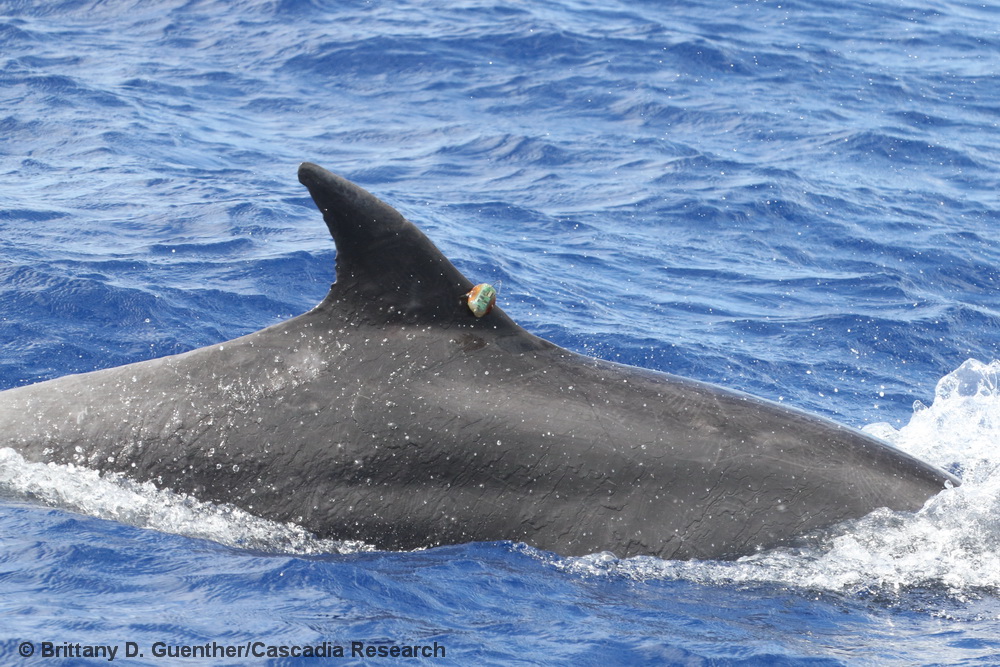
February 18th was our last day on the water. Over the last 13 days we covered 1,070 km of search effort off the south and west shores of Kaua‘i, had 69 encounters with 8 species of dolphins and whales (46 of which were with odontocetes), collected 19 biopsy samples of five different species, took over 38,000 photos (both of cetaceans and birds), and deployed three tags, one on a short-finned pilot whale and two on bottlenose dolphins. The photo above shows one of the two tagged bottlenose dolphins, tagged with Wildlife Computers SPLASH10 LIMPET tags.
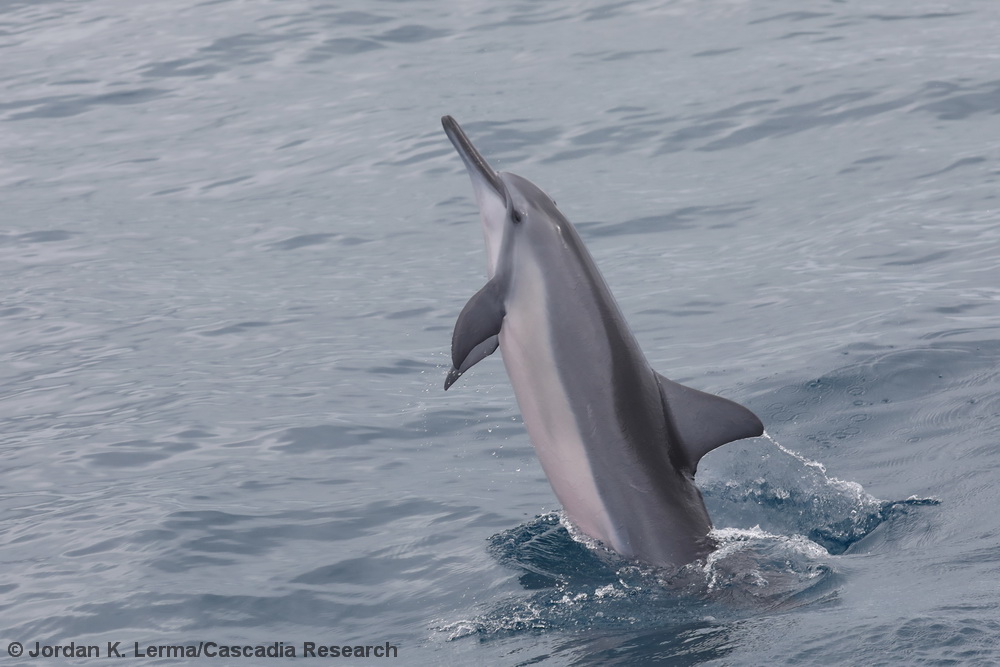
During the field effort we had 12 sightings of spinner dolphins, our second-most frequently seen species of odontocete (rough-toothed dolphins were the most frequently seen odontocete). Although they are often referred to as “Hawaiian spinner dolphins”, the type of spinner dolphin seen in Hawaiian waters is a widespread subspecies called the Gray’s spinner dolphin.
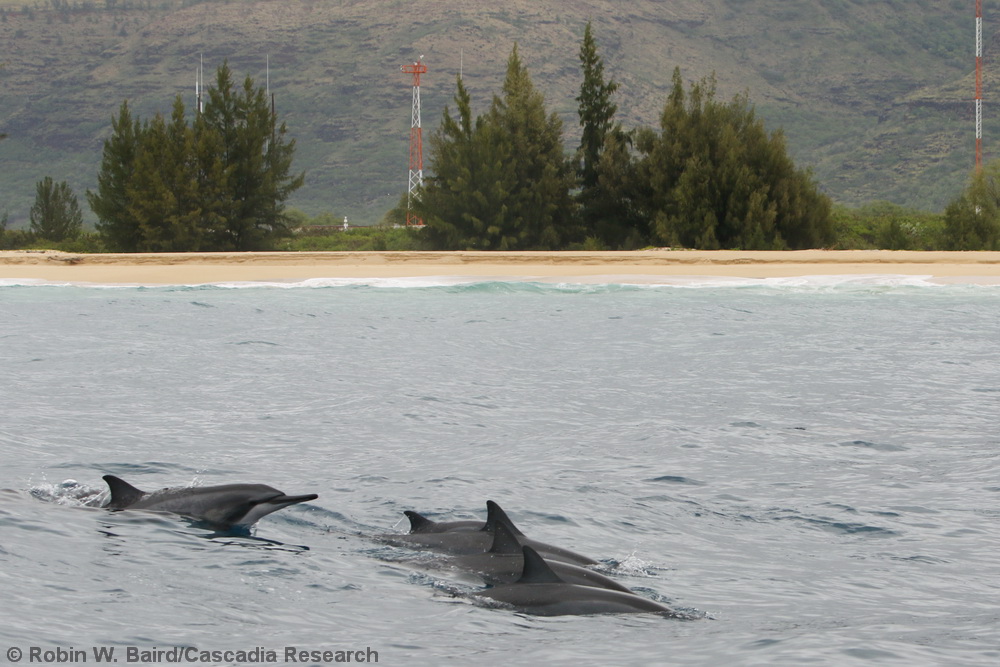
Most of our spinner dolphin sightings were in very shallow water, typically seen as we were transiting back towards the harbor when the seas offshore were too rough to productively work.
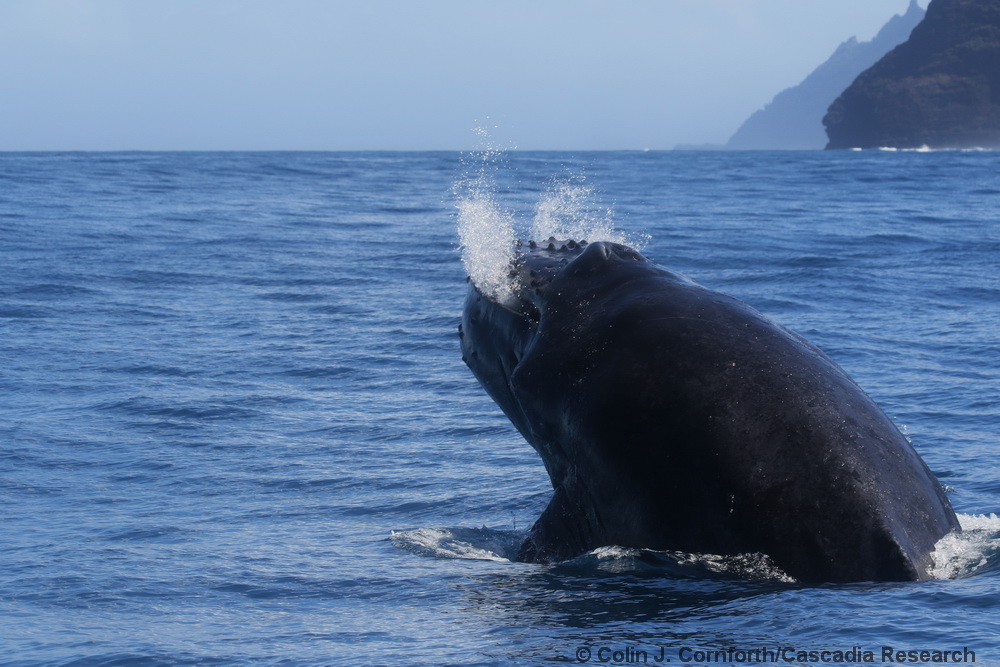
Although both fin whales and minke whales were detected acoustically on the Navy’s hydrophone range while we were here, the only baleen whale we encountered was the humpback whale! Most groups we did not approach, but even with the small number we did (to check whether there might be dolphins with them or when it was too rough to work offshore) humpbacks were our most frequently-encountered cetacean. One of the most interesting, albeit distant, sightings we had was a lone animal (not the one in the photo above) that may have been feeding, a behavior that is rarely documented in Hawai‘i. During our sighting a school of small fish were seen jumping out of the water just before a humpback lunged at the surface right where the fish were, and a number of Sooty Terns were diving in the area feeding at the time, all evidence that the whale was feeding. Although humpbacks don’t feed very often in Hawaiian waters (if they did, people would see them defecating more!), it is likely they “snack” occasionally in productive areas, and the large number of plunge feeding seabirds off Kaua‘i this trip (e.g., Sooty Terns, tropicbirds, boobies) suggest that there are a lot of small fish around.
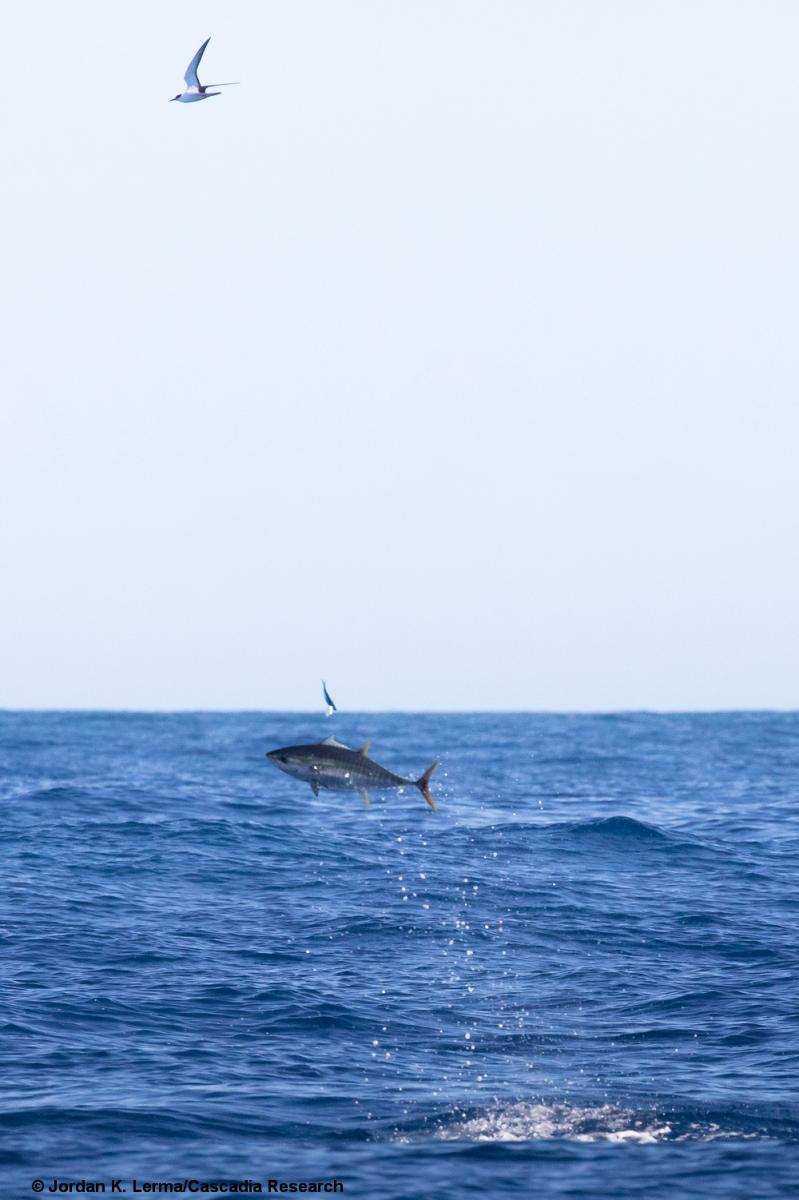
A small tuna chasing a flying fish, with a Sooty Tern overhead.
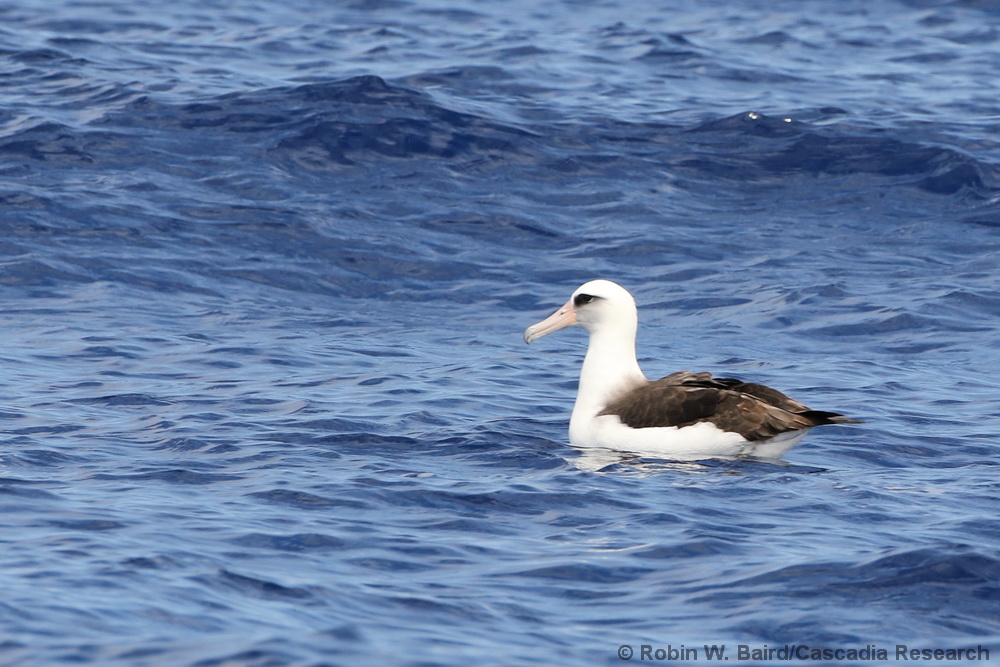
We record all seabirds we see while on the water, tallying common species and photographing (and recording locations) of rare or unusual species. This trip we had regular sightings of both Laysan (above) and Black-footed Albatross. The most interesting seabird sighting we had were Tristram’s Storm Petrels (see photo below), a species we’d only previously seen on one day in February 2015.
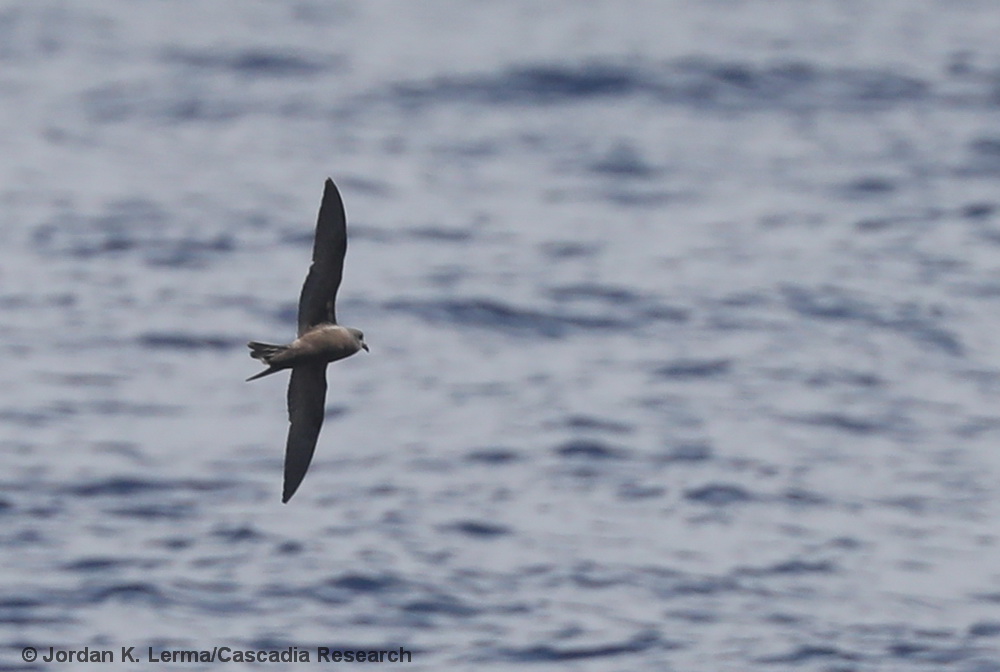
On February 15th we had two sightings of Tristram’s Storm Petrels. This species breeds in the northwestern Hawaiian Islands and is rarely seen around the main Hawaiian Islands. For more information on our seabird sightings check out our Hawaiian seabird web page.
February 14th update
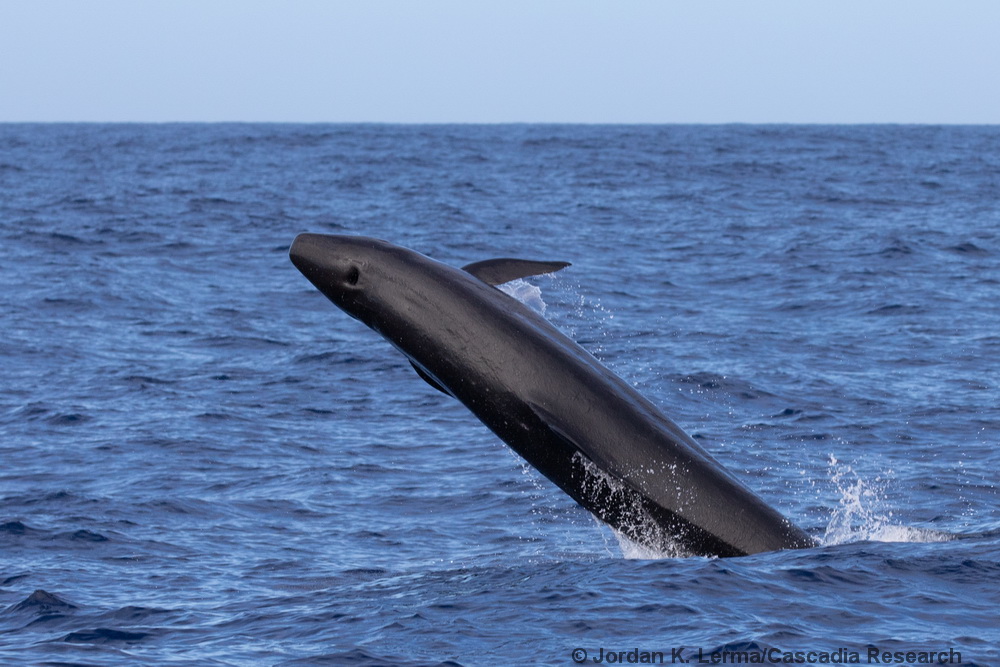
Today we encountered our highest priority species, false killer whales! We were directed to this group based on an acoustic detection from the Navy’s hydrophone range from collaborating researchers with the Navy’s M3R (Marine Mammal Monitoring on Navy Ranges) program. The group was moving fast but we were able to get good identification photos of about eight individuals and collected three biopsy samples – from the biopsies we can confirm whether they are part of the pelagic or one of the insular populations.
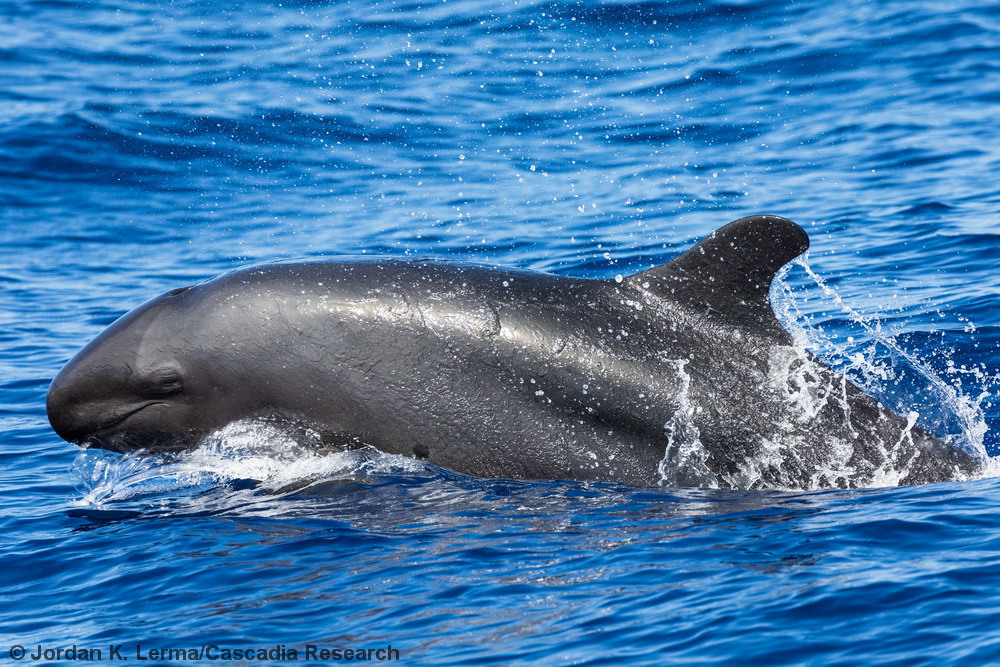
This is an area where all three Hawaiian populations of false killer whales overlap, so we are looking forward to determining whether these individuals are from the endangered main Hawaiian Islands population or are part of the Northwestern Hawaiian Islands or pelagic populations.
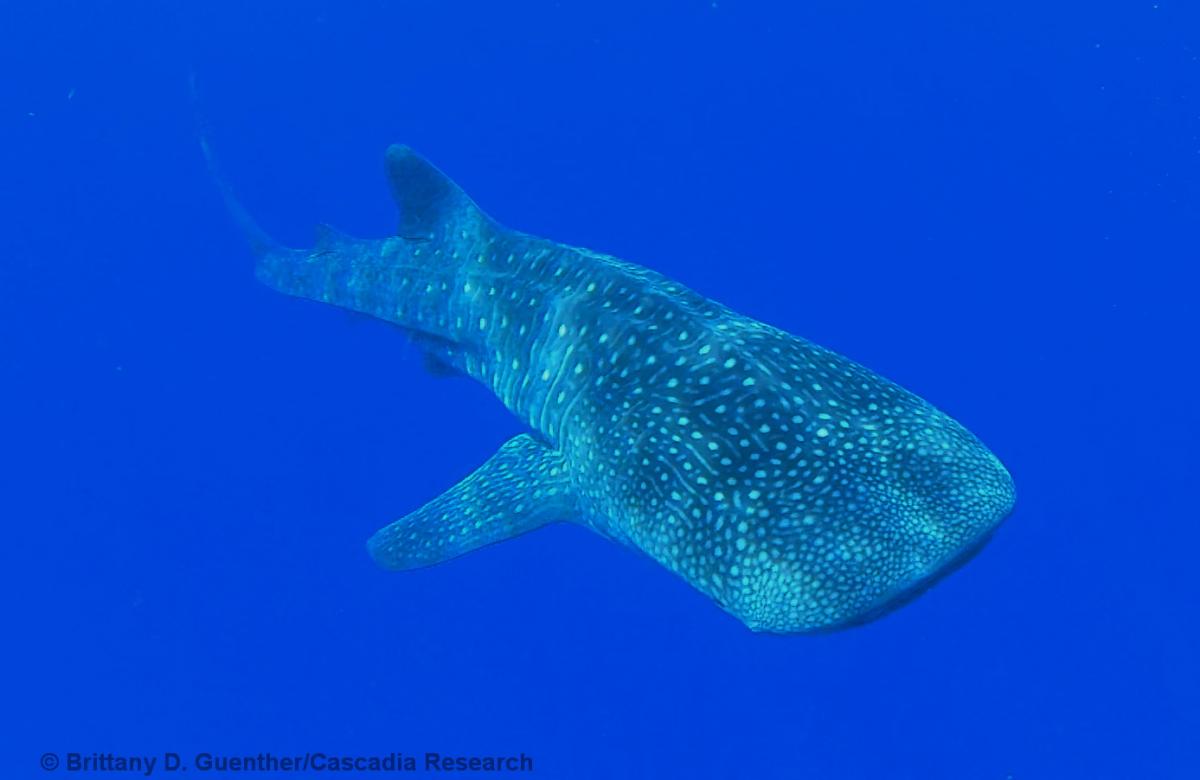
On February 14th we also encountered a whale shark! We contribute all photos of whale sharks to the photo-ID catalog of this species run by the Hawai‘i Uncharted Research Collective
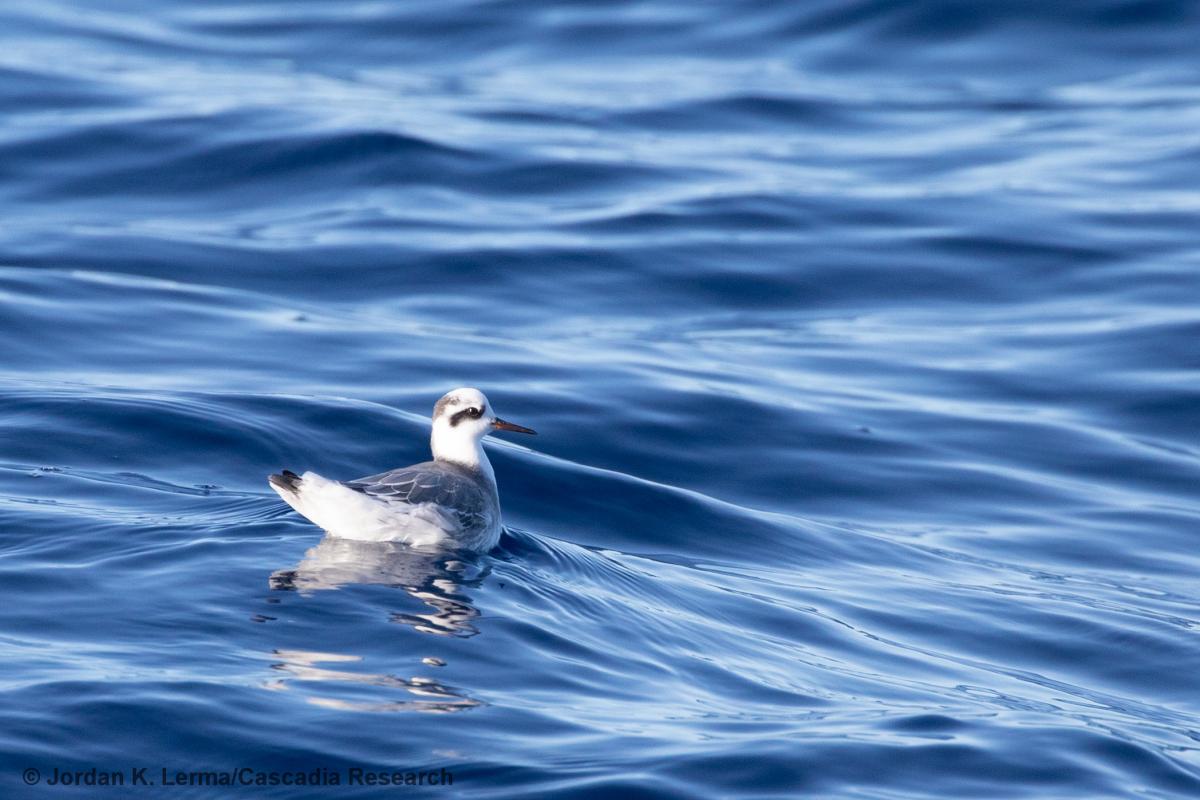
One of the most interesting birds we’ve documented this trip is the Red Phalarope – we’ve had sightings of lone individuals of this species on three different days. Red Phalaropes are seasonal migrants to Hawaiian waters – for more information on this species here check out the Bishop Museum’s account for this species (by Pyle and Pyle)
February 9th update
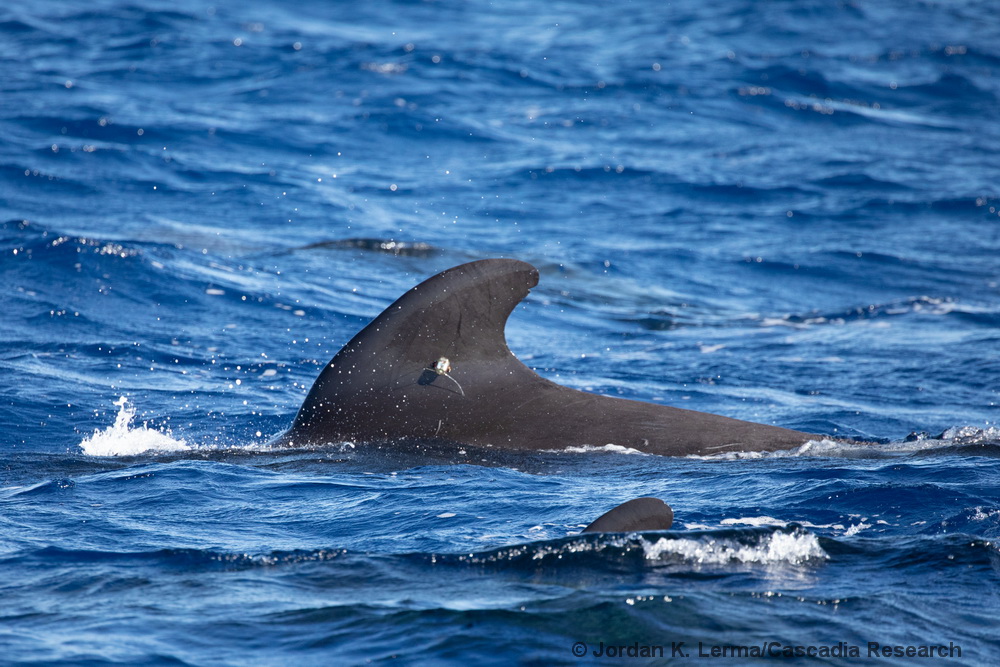
Today we deployed a satellite tag on an adult male short-finned pilot whale, one of our primary goals for the project. We are getting good locations from this individual, and hope to be able to re-locate it over the next few days to try to put a second tag out on the group.
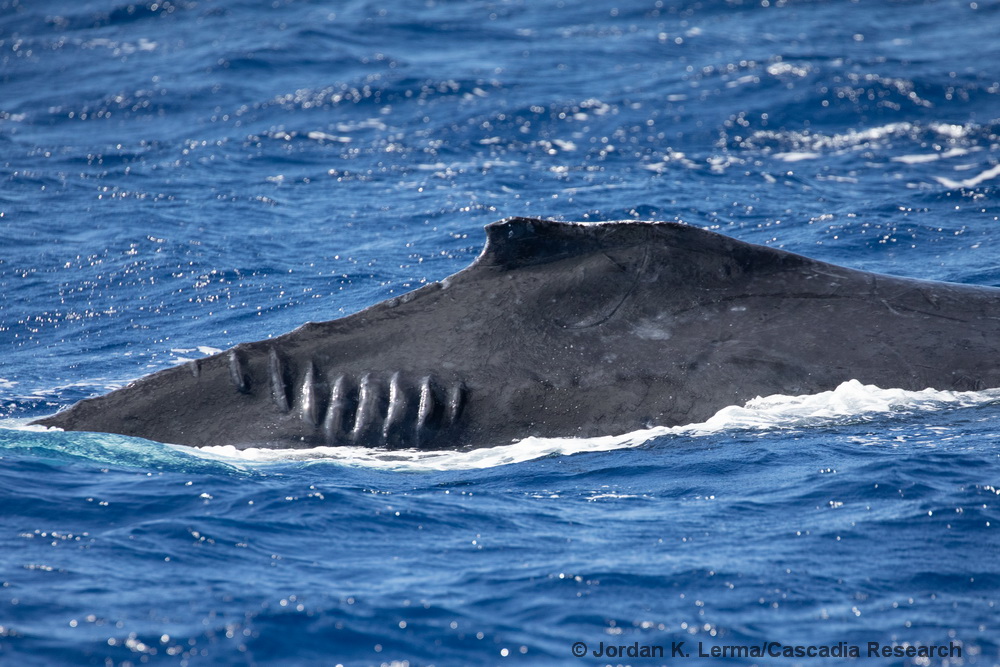
We also encountered quite a few humpback whales today, including this individual with a prop strike wound. Although our focus for this effort is not humpback whales, we do approach nearby individuals to confirm whether there may be odontocetes with them and also opportunistically collect fluke photographs for contribution to HappyWhale.com.

A humpback whale pec slapping

Today we saw our first competitive group (i.e., multiple males competing over access to a female), and one individual was repeatedly doing these head out lunge behaviors.
February 8th update
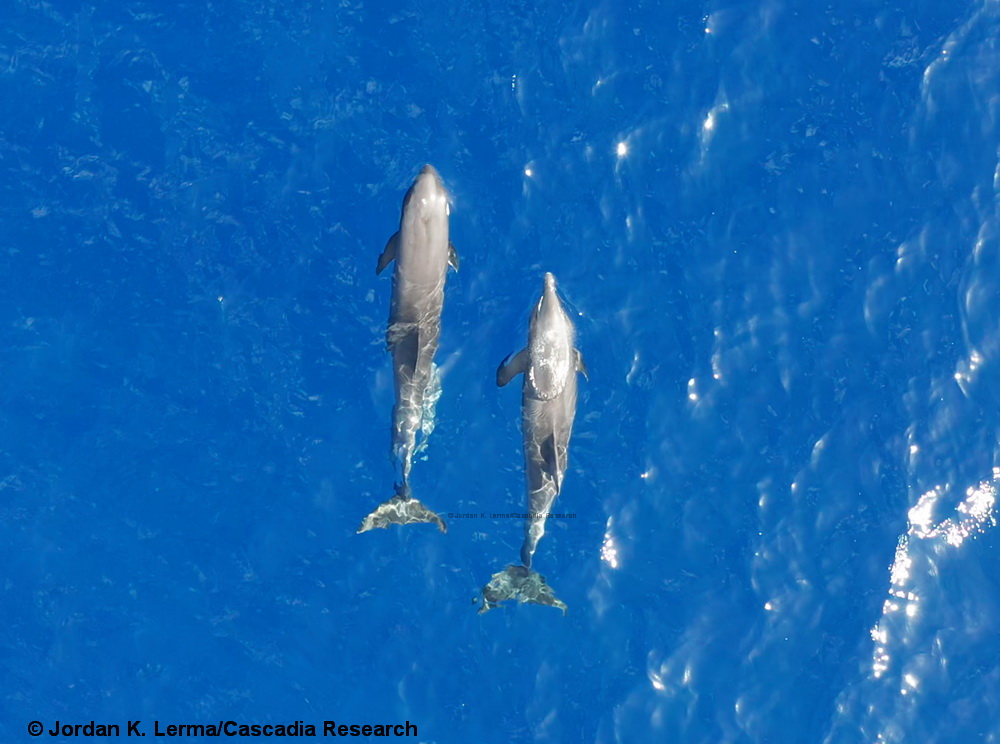
During our August 2017 field effort off this island we documented a hybrid between a melon-headed whale and a rough-toothed dolphin (confirmed genetically – check out this report). Today we re-encountered the same individual (right individual above), still accompanied by a melon-headed whale (left individual above) and associating with rough-toothed dolphins. This time we were able to get drone images of the pair along with the associated rough-toothed dolphins, which we will be able to use to measure the individuals and better describe morphological differences.

We were able to confirm these are the same two individuals based on markings on the dorsal fin. From the genetic analysis we know the mother is a melon-headed whale and the father is a rough-toothed dolphin. This is the first re-sighting of this hybrid (a male) since it was documented in 2017. The hybrid shares some characteristics of both of the parents, but others (such as the head shape) are intermediate between the two. The hybrid is shown here (in the front) along with a melon-headed whale that we suspect is the mother.

We had four separate encounters with rough-toothed dolphins today, and were able to obtain two genetic samples. This leaping individual had a number of white oval scars on the belly from cookie-cutter shark bites.
February 7th update
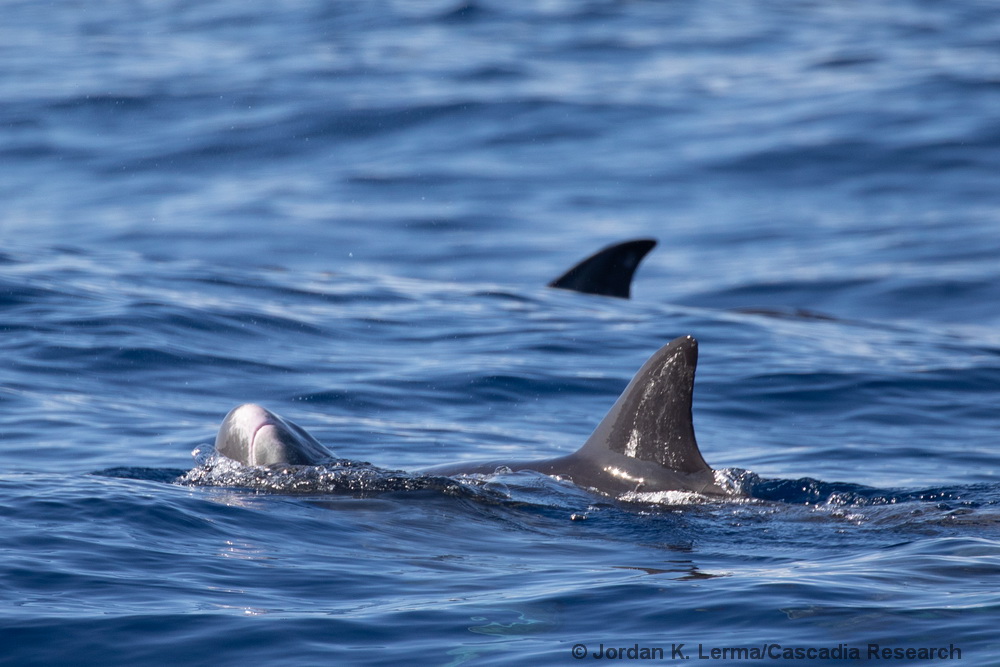
Today we had a rare sighting of pygmy killer whales off the south shore of Kauaʻi. This is only our third sighting of this species off Kauaʻi or Niʻihau in all our field efforts here – our previous sightings were a group in October 2014 and another in June 2003! We have a photo-ID catalog of this species from the Hawaiian Islands that includes 450 individuals, and only 16 of those were from our previous Kauaʻi encounters, so the photos of 10 or so individuals we obtained will be a large increase in IDs for Kauaʻi and Niʻihau.
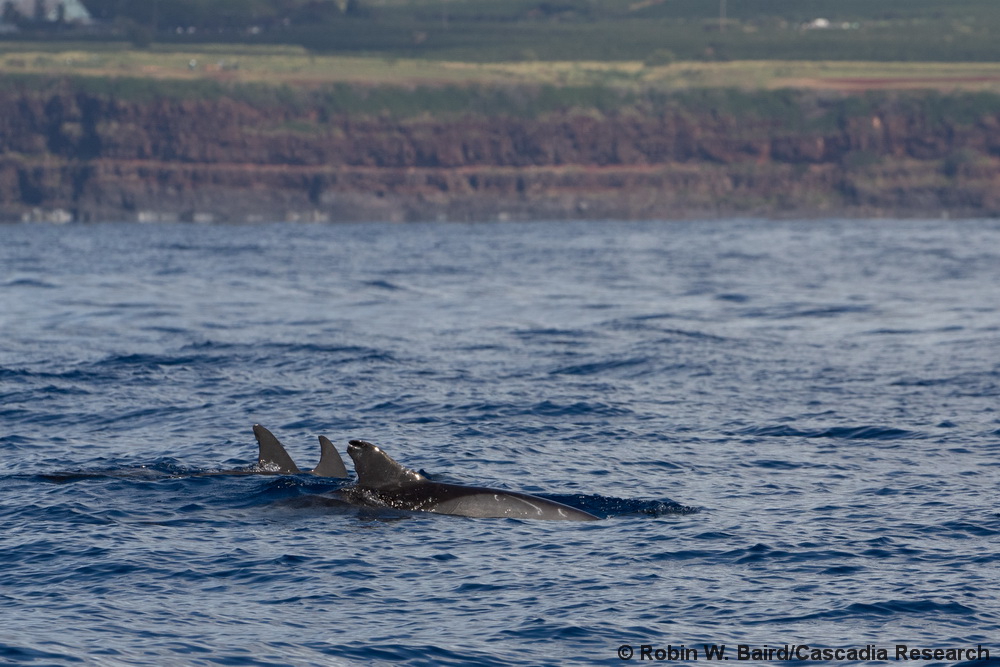
Pygmy killer whales are one of the least-known species of delphinids (oceanic dolphins) in the world, and our study of this species is the most detailed study of pygmy killer whales anywhere in the world. There are two known resident communities of pygmy killer whales, one off Hawaiʻi Island and the other off Oʻahu and Lānaʻi, and individuals, presumably from an open-ocean population, also move through the area. We are guessing these individuals are probably from an open-ocean population, but will compare the photos obtained to our photo-ID catalog to see if there are any matches.
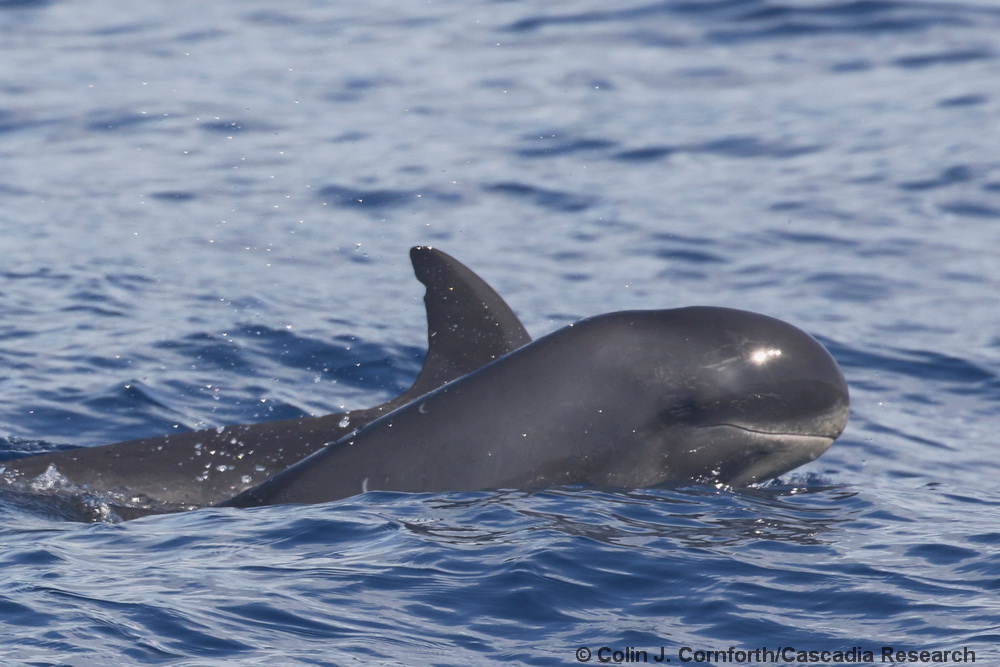
February 6th update
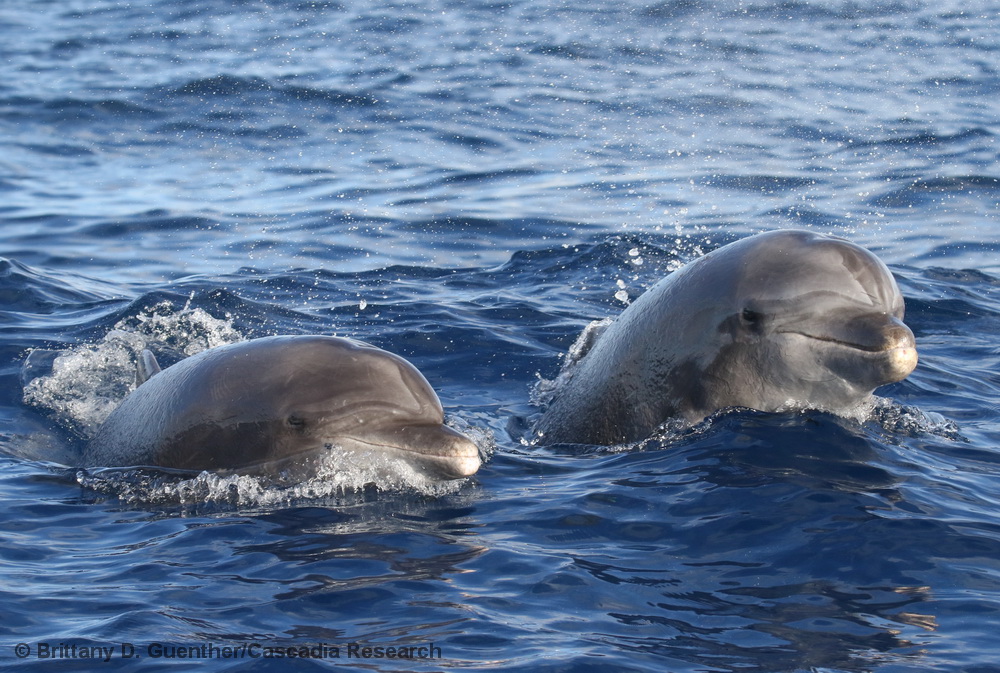
Our first day on the water was fairly productive, despite the strong winds coming from the north. Our primary study area is off the west side of the island, so winds from the north force us to work off the south shore – today we launched from Port Allen, and worked in conjunction with the land team (see below) with several different species. We had a productive encounter with bottlenose dolphins, collecting a biopsy sample and obtaining identification photos of many of the individuals present.
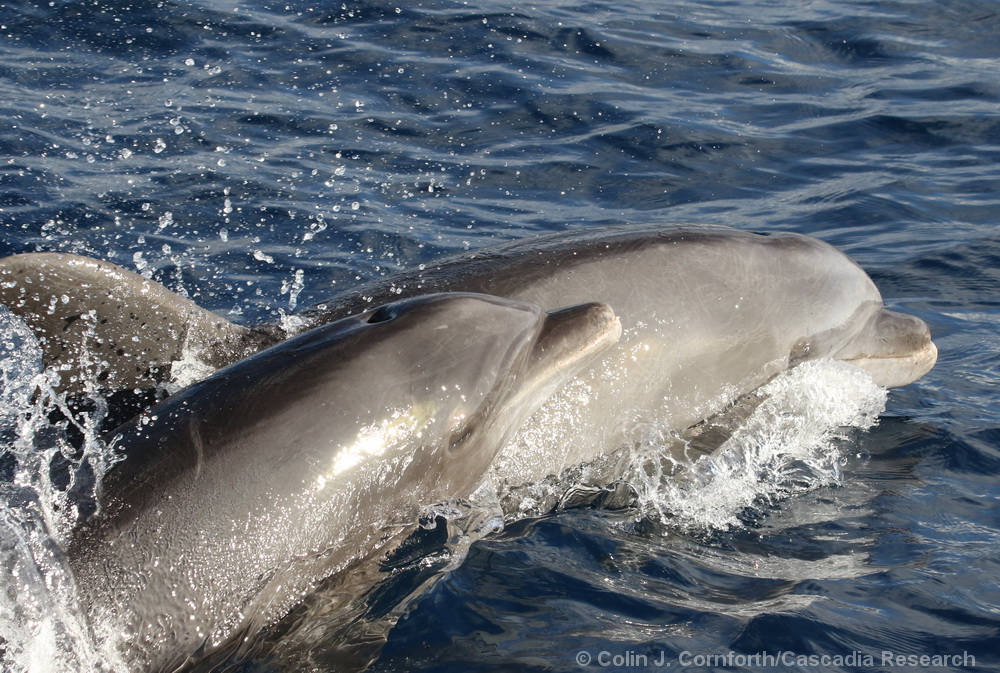
Our photo-ID catalog of bottlenose dolphins in Hawaiʻi includes over 800 distinctive individuals, of which about 200 have been documented off Kauaʻi. We hope to compare photos of the dolphins obtained during this encounter to our catalog to help understand population structure and population trends for the Kauaʻi and Niʻihau resident dolphins.
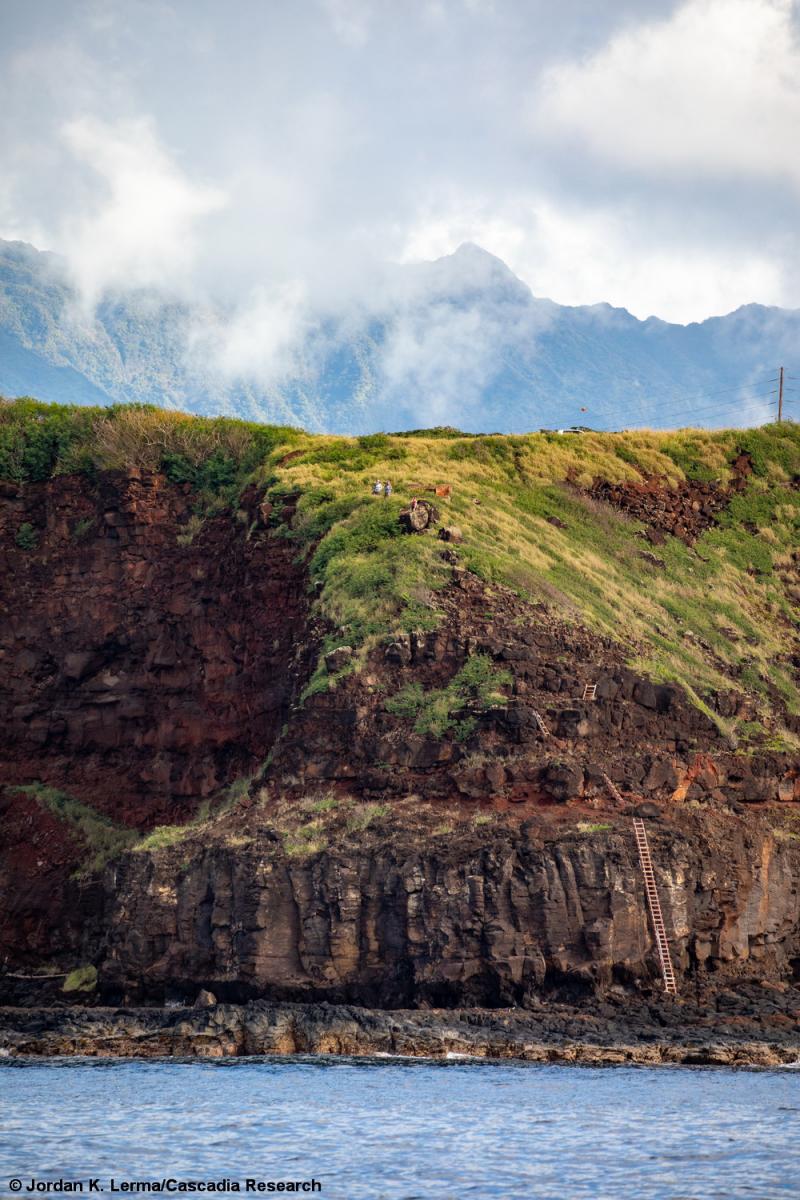
An important part of our research effort is a land-based crew, led by Michelle Nason, using tripod-mounted 16x binoculars and a tripod-mounted 25-60x spotting scope to both assess different species of whales and dolphins in the area, and help direct the research boat to high-priority groups. The photo above shows the land-based crew on day 1 of the field project.

This photo is of a short-finned pilot whale seen during our February 2016 field effort.
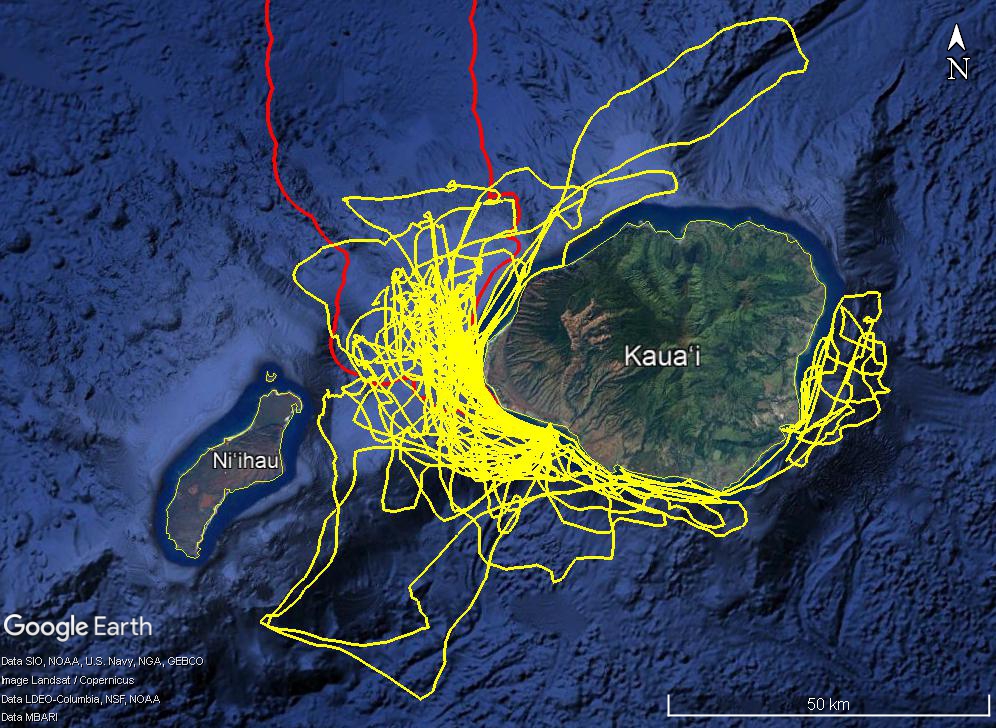
This map shows our vessel tracklines (yellow) for previous field projects during the month of February (in 2013, 2014, 2015 and 2016). The Pacific Missile Range Facility (PMRF) boundary is shown in red. Inside this boundary are >150 bottom-mounted hydrophones that can be used to help direct our research vessel to vocalizing cetaceans.
Photos on this page were taken under NMFS Permit No. 20605. Contact Robin Baird (rwbaird “at” cascadiaresearch “dot” org) for more information.
Check out our previous Hawai‘i field projects at this page.
For more information and updates on our research follow us on Facebook!